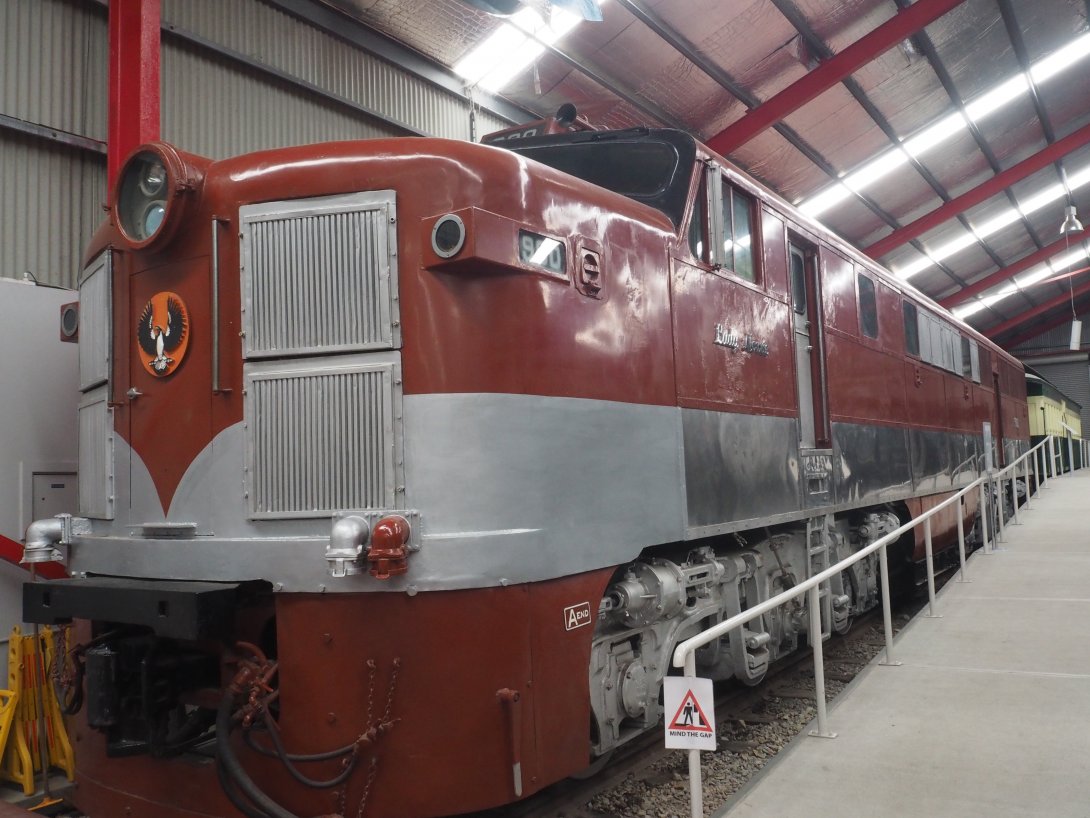The Community Heritage Grant (CHG) program supports local groups to access professional cultural heritage expertise. It provides funding for community organisations to understand the meaning and value of their collections and undertake conservation activities.
The National Railway Museum (NRM) is a self-funded, largely volunteer run organisation dedicated to the preservation and presentation of railway history. The historic archive section of the Museum houses 1 million records and 230,000 photographs that cover railways throughout Australia more broadly. Meanwhile, the display pavilions house over 80 items of railway rolling stock related to South Australian Railways, Commonwealth Railways, and private operators on all three major railway gauges in use throughout Australia's history.
The NRM, based at Port Adelaide, secured a grant in the 2021 Community Heritage Grants to work with a qualified historian to undertake a significance assessment of their collection. A significance assessment helps explain the meaning and value of a collection and provides further information for its management and interpretation. This appraisal by an external consultant, using industry recognised significance criteria, is tailored to the needs of the organisation and designed to assist staff/volunteers to prioritise collection items, interpret your collection and should form a sound basis for future collection management activities.
We found the CHG process to be simple and user-friendly...I would strongly encourage other organisations to consider applying, it is a rewarding process that helps streamline collection management and reinvigorate those working with the collections.
Explore the following items from the NRM’s collection with excerpts from the significance assessment completed by Kevin Jones.
Locomotive No. 900 Lady Norrie

Locomotive No. 900 Lady Norrie is highly significant to the technological history of railways in illustrating the transition from steam to diesel-electric power. Locomotive No. 900 was the first diesel-electric locomotive to be placed in main-line service on the Australian mainland.
It entered service on 10 September 1951, and it was deployed to haul the East-West Express between Adelaide and Port Pirie and the Overland between Adelaide and Serviceton.
Locomotive No. 900 was built at the Islington Workshops in Adelaide and fitted with English electric engines. It was the first of ten 1,580 horsepower locomotives that changed the face of South Australian railways and heralded the advent of diesel electric power in Australia. They worked over all main lines and hauled goods and passenger trains and displaced preceding generations of steam engines.
Australian National took over country lines in South Australia in 1978 and it began to replace the 900 class locomotives, ending their service as they came due for major refits. For a final brief chapter in the 1980s 900 class locomotives once again hauled the Overland. Locomotive No. 900, the first in service, was also one of the last to be decommissioned in 1985.
Tea and Sugar Train

The Tea and Sugar is highly significant to the history of the Nullabor Plain. The train was a lifeline providing fresh food, household goods, banking for those who lived on the Nullabor and particularly those who worked on the construction of the Trans-Australian Railway.
The service was established early in the 20th century to provide for workers building the line between Port August and Kalgoorlie that joined existing lines to Sydney and Perth and established the Trans-Australia Railway. At first a supply service was provided from a brake van but by 1915 dedicated carriages provided a supply van, butcher shop, and a fruit and vegetable van. One set of vehicles was based in Kalgoorlie and a second set in Port Augusta to support crews working from each end of the new line.
As well as supporting rail construction workers, the train supplied rural communities along the Nullabor. The butcher van carried live sheep and butchered them along the route to provide fresh meat, the pay car came to also operate as a branch of the Commonwealth Bank, and eventually a medical service was added.
The Nullabor Plain has a place in national mythology about the outback and the Tea and Sugar Train has a place in that story as evidenced by the films that have been made and the stories that have been written about the train. The Tea and Sugar Train preserved at the National Railway Museum consists of four rail cars: a pay car that entered service in 1972, a butcher van that entered service in 1944, a provision van that entered service in 1955 and a relay brake van dating from 1971. The cars are in very good condition and complete with fittings.
Locomotive Y12

Locomotive Y12 is highly significant to economic and social history illustrating the close ties between rail and mining. Built in Manchester, England in 1893, it was one of 21 locomotives that were built for the Silverton Tramway Company Ltd.
The Silverton Tramway Company built and operated a 56-kilometre rail line from Broken Hill to Cockburn on the South Australian border where silver ore was transferred to South Australian Railways to be delivered to a smelter at Port Pirie. The Company filled a gap after the colonial government of NSW refused to build a line itself or to allow South Australian Railways to extend its line to Broken Hill. The privately built line was called a tramway because only governments were allowed to build railways.
The Silverton Tramway was very successful providing the connection to South Australia until 1970 when South Australian Railways built a more direct connection to Broken Hill as part of a standard gauge transcontinental line between Sydney and Perth. Locomotive Y12, built in 1893, was a significant part of that history serving on the line for more than 70 years. In its later years, Locomotive Y12 was superseded on the mainline but was still used as a shunting engine until July 1961.
Learn more about Community Heritage Grants, including how to apply, here.